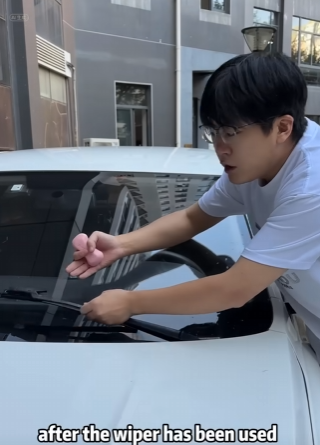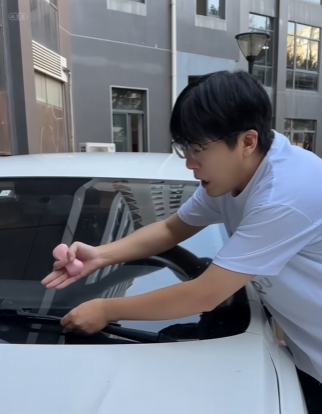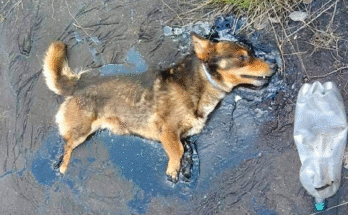
When you think of soap and cars, the first image that comes to mind is probably a weekend car wash in the driveway, bubbles foaming across the paint as water sprays in the sun. Most people see soap simply as a cleaning agent, something used to wash off dirt, bugs, and grime. But what if soap had another, more unexpected function in the automotive world? Believe it or not, soap plays a few surprising roles in car maintenance, safety, and even manufacturing. Let’s explore the hidden functions of soap in cars — you might never look at your bar of soap or bottle of dish detergent the same way again.

1. Detecting Air Leaks
One of the most practical and lesser-known uses of soap in cars is in detecting air leaks. Mechanics and DIY car enthusiasts use a simple soap-and-water mixture to find tiny leaks in tires, hoses, and cooling systems. Here’s how it works: the soapy solution is sprayed or brushed onto the suspected area. If there’s a leak, the escaping air creates bubbles. It’s a low-cost, highly effective diagnostic trick that avoids the need for expensive equipment.
This method is especially useful when checking for punctures in tires or leaks in the radiator or vacuum hoses. It’s even used in the aviation and trucking industries for similar reasons. Soap, in this context, acts like a detective tool—simple, accessible, and surprisingly accurate.
2. Lubricating Tight Fittings
Soap also serves as a temporary lubricant for car parts that need to fit snugly. For instance, when installing rubber hoses, bushings, or grommets, applying a bit of soap can help reduce friction. Unlike petroleum-based lubricants, which might degrade rubber or plastic over time, a mild soap solution is water-based and gentle. Once the part is in place, the soap dries without leaving harmful residues.
This is particularly common in windshield installations or when replacing weather stripping. The soap makes the parts easier to slide into position, saving time and effort — and in some cases, preventing damage caused by forcing dry rubber into place.

3. Preventing Fog on Windows
Ever had your windshield fog up while driving, making it hard to see? Here’s a trick that some drivers swear by: applying a thin layer of soap to the inside of the windshield and then buffing it off with a soft cloth. The soap creates a nearly invisible film that helps prevent condensation from forming, keeping your vision clear in humid or cold weather.
This trick is similar to the method used by scuba divers who rub soap or spit on their mask lenses to prevent fogging underwater. It’s not a permanent fix, but it’s a handy hack for dealing with foggy windows in the winter months.
4. Marking and Temporary Labels in Car Manufacturing
During the car assembly process, soapstone (a type of soft rock used like chalk) or soap-like marking compounds are used to label parts, mark cut lines, or track inspections. These temporary markings are visible during assembly but can be easily wiped away before the car reaches the showroom.
Even mechanics use soapstone or chalk pencils when working on repairs, writing notes on parts or panels that can be removed later without damaging the vehicle.
5. Preventing Paint Overspray
Here’s another curious use: some professional detailers and auto painters use a diluted soap solution on car parts that shouldn’t be painted — like rubber trims or badges. When paint overspray lands on the soap-covered surfaces, it doesn’t stick well. The paint can then be rinsed off after the job is done.
This trick is especially useful in older cars with hard-to-remove trims. Instead of taping off every little edge, a layer of soapy water provides a quick and effective protective barrier.

6. Window Installation Aid
Before adhesives became dominant in window installation, car glass was often held in place by rubber gaskets. These gaskets had to be carefully stretched and fitted around the edges of the windows. Mechanics would often use soap to lubricate the rubber, making it easier to install the glass without tearing the gasket or damaging the frame.
Although modern cars typically use glue and sealant to fix windows in place, soap is still used in some windshield installations, especially on classic or vintage vehicles being restored.
7. Silent Helper in Bolt Threads
Have you ever struggled with squeaky bolts or nuts during car maintenance? A bar of soap can be used to coat the threads of a screw or bolt. It works as a dry lubricant and makes screwing them in easier. It also helps prevent corrosion and seizing, which is especially useful for parts exposed to the elements, like underbody panels or suspension components.
This is an old-school mechanic trick, and while not a substitute for thread lubricant or anti-seize compounds in heavy-duty jobs, it’s a clever alternative in a pinch.
8. Aiding Interior Repairs and Plastic Fitment
When trying to reassemble plastic trim pieces inside the car—dashboard panels, door cards, or console components—a touch of soap on clips and slots can make snapping the pieces back together much easier. This reduces the risk of breaking delicate plastic tabs, which are often hard to replace.
Soap provides just enough slip to allow parts to slide into place smoothly without permanently altering their grip or fit.

9. Emergency Squeak Stopper
Suspension parts, rubber bushings, and door seals can squeak over time, causing annoying noises. If you don’t have silicone spray or lubricant on hand, rubbing a bit of dry soap or a soapy rag on the squeaky area can temporarily silence the noise. It’s not a long-term solution, but it’s a great emergency fix.
Many older car owners use this trick to stop door creaks and annoying vibrations, especially in older vehicles with worn-out rubber parts.
10. As a Cleaning Agent in Disguise
Finally, we come back full circle: while cleaning might seem like soap’s most obvious function, many don’t realize how specific types of soap are chosen for different parts of a car. Car shampoos, for instance, are pH balanced to avoid stripping wax coatings or damaging paint. In engine cleaning, degreasers (essentially heavy-duty soaps) are used to break down oil and grime. Soap isn’t just about sparkle — it’s a tool for protection, longevity, and performance.

Conclusion
So, the next time you see a bar of soap or a bottle of dishwashing liquid, you might think twice before relegating it only to the bathroom or kitchen. In the world of cars, soap is a kind of quiet hero — an all-purpose tool used by mechanics, manufacturers, and everyday drivers. Whether it’s detecting leaks, helping with installations, or preventing fog and squeaks, the humble soap bar has many hidden talents behind the wheel.
Who would have guessed that something as simple as soap could play such a smart, supporting role in keeping your car running smoothly?



